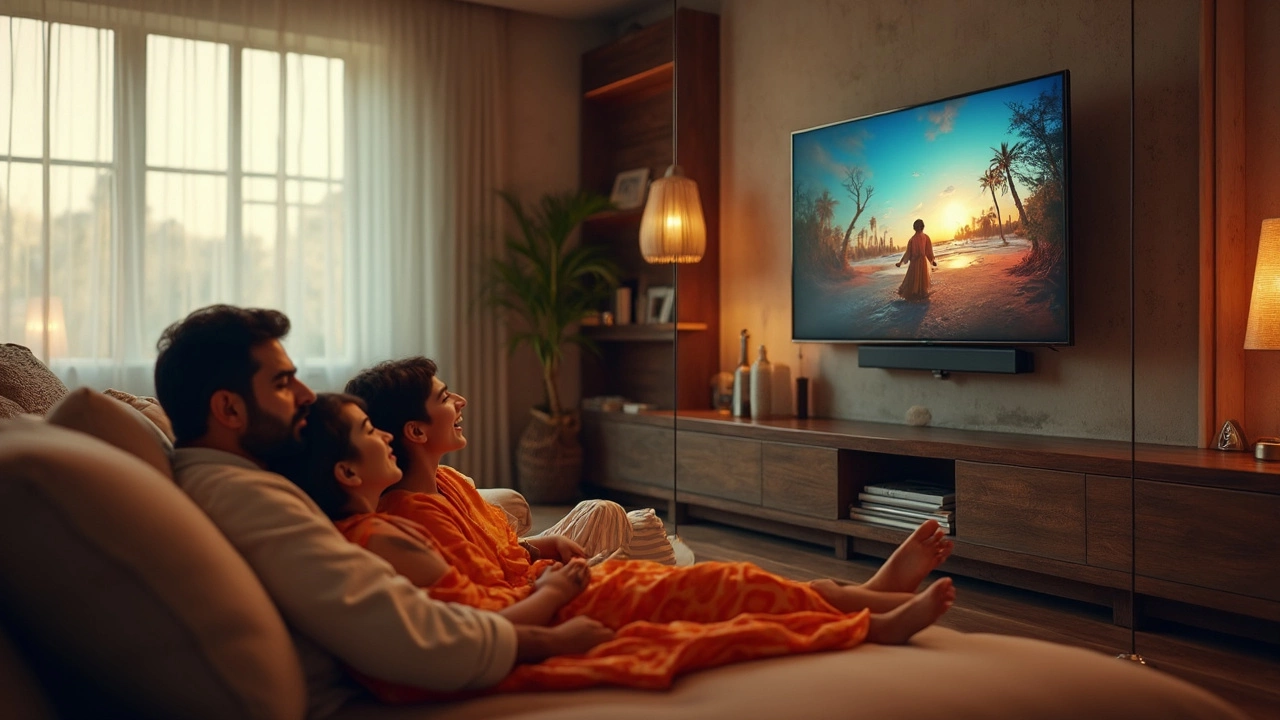Tilt TV: What It Is and Why You Need One
Ever watched a movie and had to crane your neck because the screen was too high or low? A tilt TV lets you angle the screen up or down, so you get the perfect view without straining. It’s especially handy in rooms with slanted ceilings, raised platforms, or when you place the TV on a tall cabinet.
Besides comfort, a tilt TV can reduce glare. By pointing the screen away from windows or bright lights, you keep the picture clear and vibrant. It also helps the TV fit better in tight spaces – you can mount it higher and still see everything clearly.
Why a Tilt TV Can Change Your Viewing Experience
First, ergonomics. When the screen lines up with your eye level, you watch longer without neck pain. That’s a big win for binge‑watchers and gamers alike. Second, glare control. A few degrees of tilt can make a difference on sunny days, saving you from squinting.
Third, flexibility. If you move the couch or change the room layout, you can readjust the tilt without re‑mounting the whole set. It’s a simple tweak that saves you time and money.
Step‑by‑Step Guide to Installing a Tilt TV
1. Check the wall type. Drywall, brick, or concrete each need the right anchors. Use a stud finder for wood studs, and choose masonry bolts for brick.
2. Pick the right mount. Look for a mount that lists “tilt” and supports your TV’s weight and VESA pattern. Most mid‑size TVs (32‑55 inches) work with a standard tilt bracket.
3. Mark the height. Measure the distance from the floor to where your eyes sit when seated. Aim the TV’s center about that height, then add a few inches if you want extra clearance for speakers.
4. Install the mounting plate. Secure the plate to the wall using a level. Double‑check that it’s level; a crooked plate defeats the purpose of tilting.
5. Attach the TV. Follow the mount’s instructions – usually you’ll lock the TV’s own brackets onto the plate, then tighten the safety screws.
6. Adjust the tilt. Most mounts have a lever or screw to tilt the screen up or down. Start with a small angle (5°‑10°) and sit back to see how it feels. Fine‑tune until the picture sits comfortably at eye level.
7. Secure cables. Use zip ties or a cable cover to keep power and HDMI cords neat. Loose cables can pull the TV forward and affect the tilt.
That’s it – you’re ready to enjoy a movie without a sore neck. If anything feels off, loosen the tilt knob, readjust, and tighten again. The whole process usually takes under an hour.
Finally, keep an eye on the mount’s warranty and don’t overload the bracket with extra accessories. A properly installed tilt TV will last years and keep your viewing area looking clean and comfortable.
Should I Tilt My TV Down? Straight Answers for the Perfect Viewing Angle
Wondering if tilting your TV down makes a real difference? This article breaks down when and why you might want to tilt your TV, plus how it affects your comfort and picture quality. Find tips for getting the angle just right, especially if your TV is wall-mounted or sitting high. Learn practical details that can give you a better watching experience—without any jargon. Say goodbye to stiff necks and bad glare for good.





